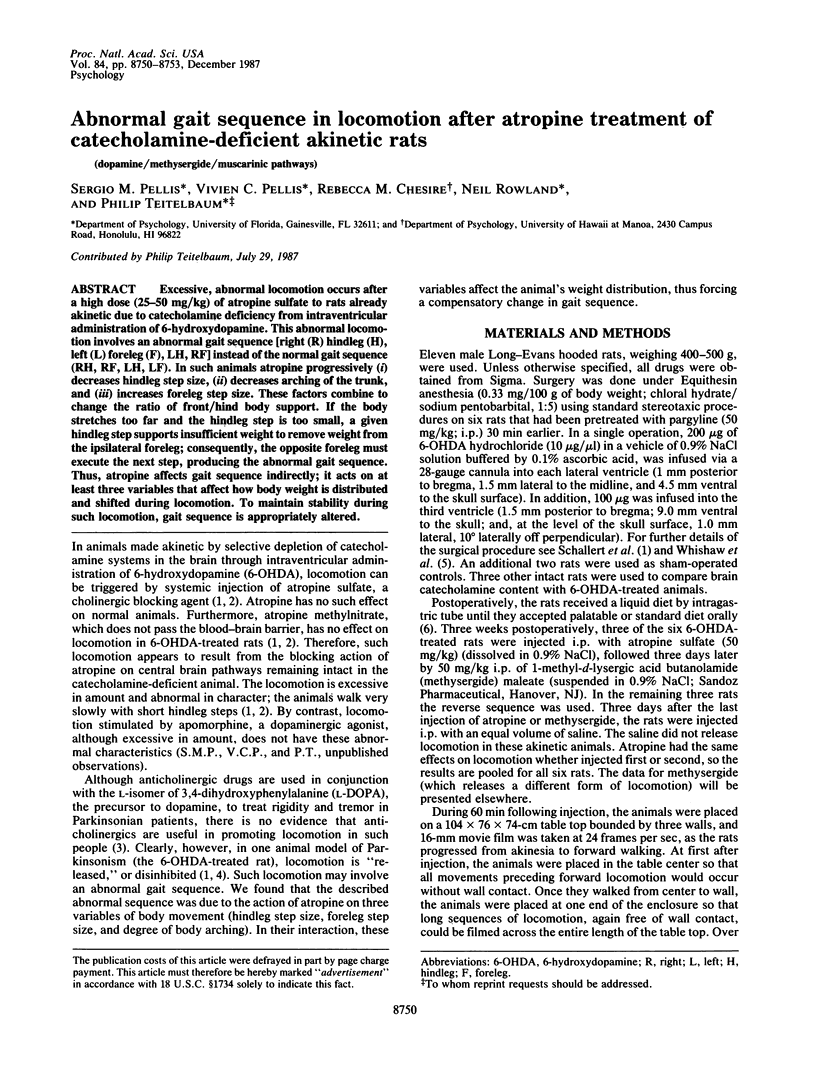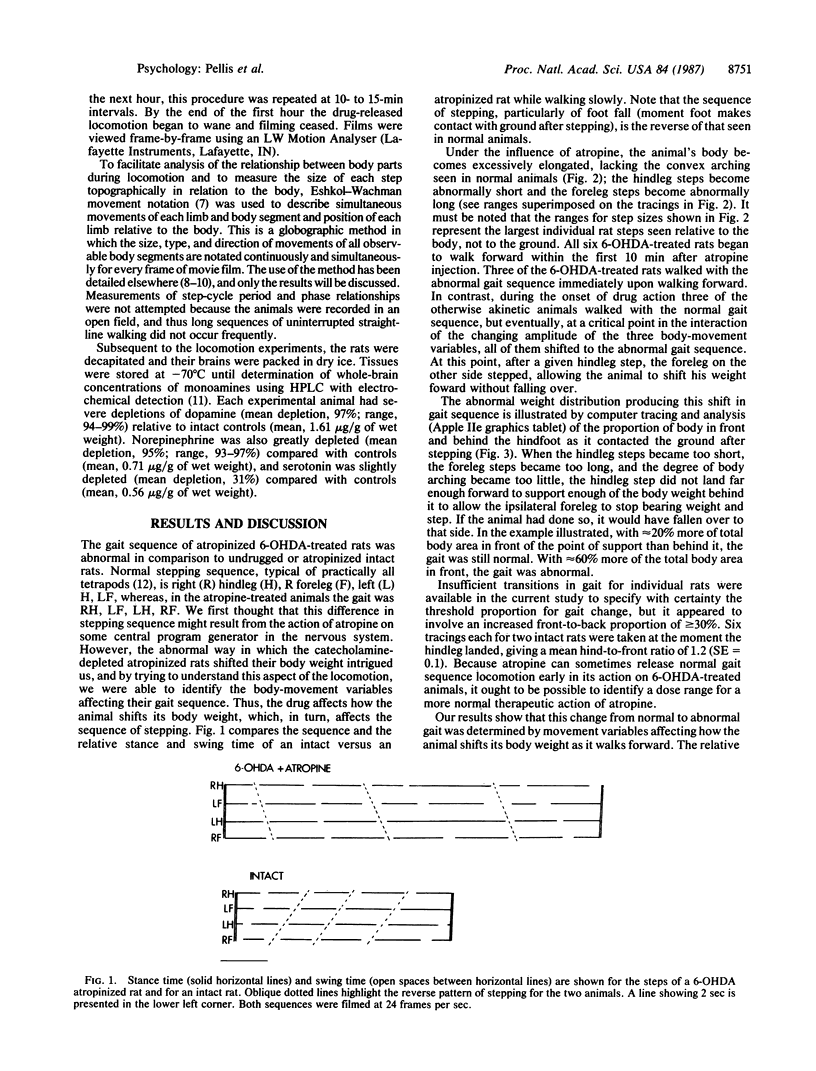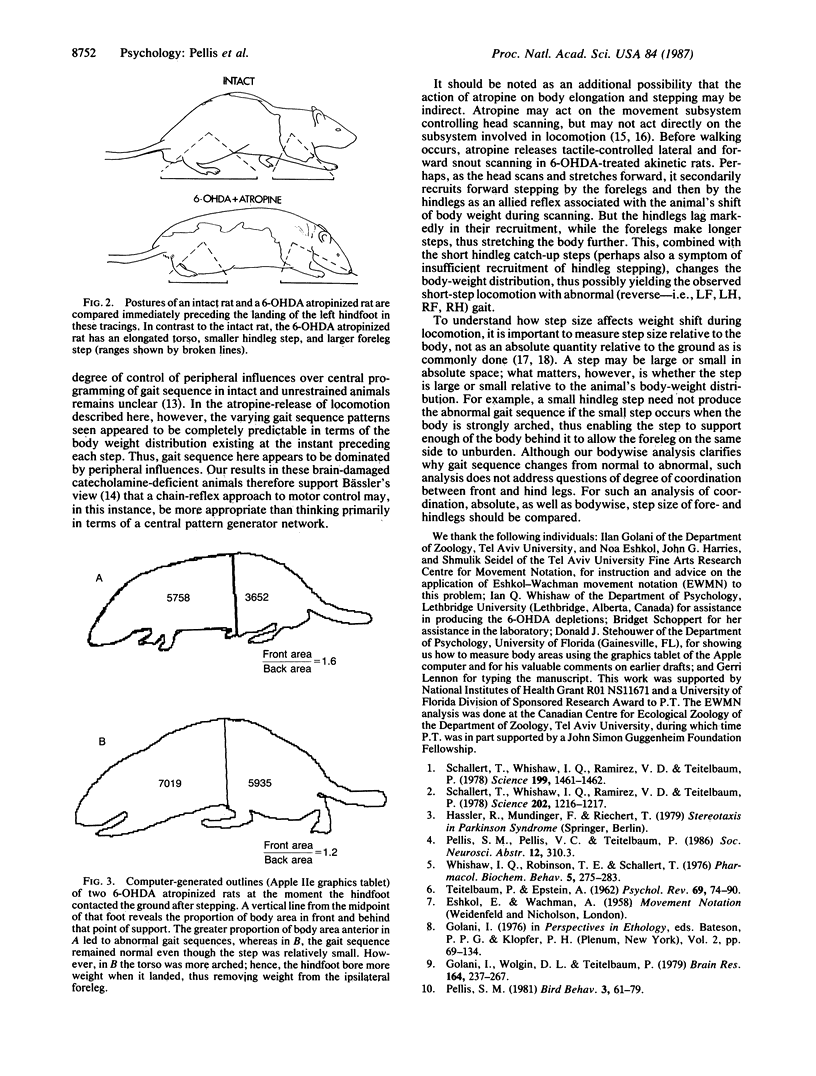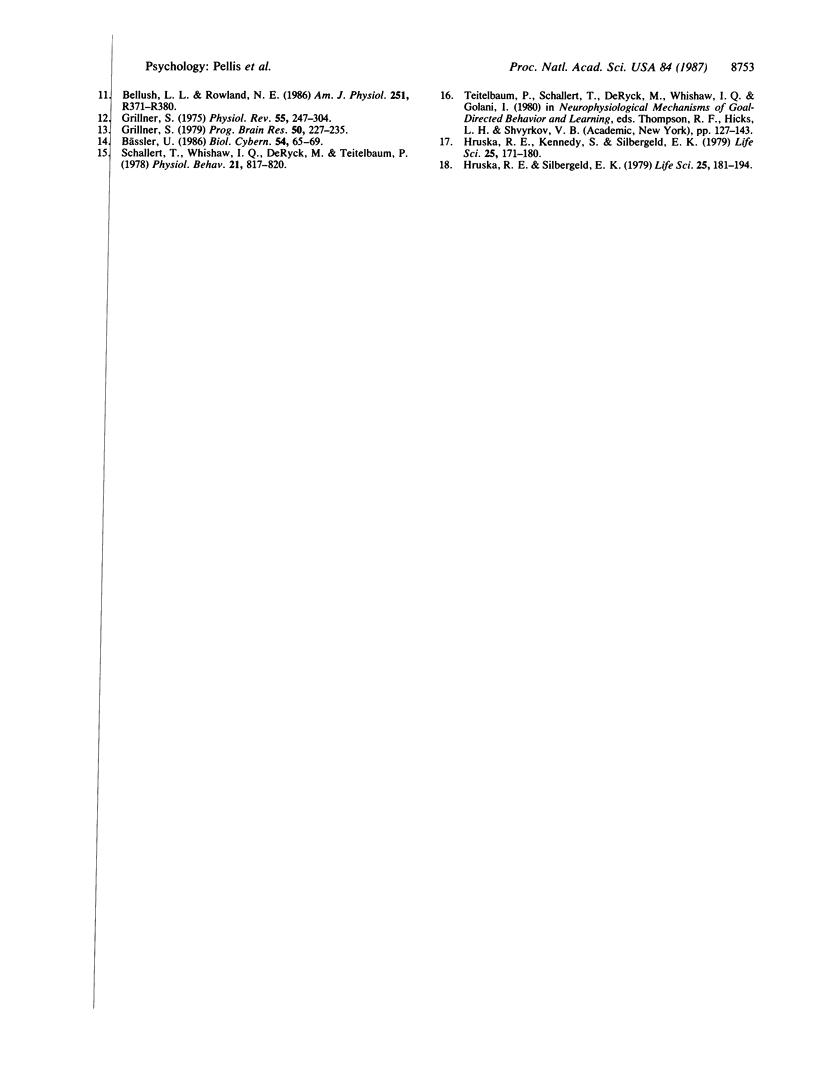Abstract
Excessive, abnormal locomotion occurs after a high dose (25-50 mg/kg) of atropine sulfate to rats already akinetic due to catecholamine deficiency from intraventricular administration of 6-hydroxydopamine. This abnormal locomotion involves an abnormal gait sequence [right (R) hindleg (H), left (L) foreleg (F), LH, RF] instead of the normal gait sequence (RH, RF, LH, LF). In such animals atropine progressively (i) decreases hindleg step size, (ii) decreases arching of the trunk, and (iii) increases foreleg step size. These factors combine to change the ratio of front/hind body support. If the body stretches too far and the hindleg step is too small, a given hindleg step supports insufficient weight to remove weight from the ipsilateral foreleg; consequently, the opposite foreleg must execute the next step, producing the abnormal gait sequence. Thus, atropine affects gait sequence indirectly; it acts on at least three variables that affect how body weight is distributed and shifted during locomotion. To maintain stability during such locomotion, gait sequence is appropriately altered.
Full text
PDF



Selected References
These references are in PubMed. This may not be the complete list of references from this article.
- Bellush L. L., Rowland N. E. Effects of dietary protein and tyrosine on behavior of diabetic rats. Am J Physiol. 1986 Aug;251(2 Pt 2):R371–R380. doi: 10.1152/ajpregu.1986.251.2.R371. [DOI] [PubMed] [Google Scholar]
- Golani I., Wolgin D. L., Teitelbaum P. A proposed natural geometry of recovery from akinesia in the lateral hypothalamic rat. Brain Res. 1979 Mar 23;164:237–267. doi: 10.1016/0006-8993(79)90019-2. [DOI] [PubMed] [Google Scholar]
- Grillner S. Interaction between central and peripheral mechanisms in the control of locomotion. Prog Brain Res. 1979;50:227–235. doi: 10.1016/S0079-6123(08)60823-7. [DOI] [PubMed] [Google Scholar]
- Grillner S. Locomotion in vertebrates: central mechanisms and reflex interaction. Physiol Rev. 1975 Apr;55(2):247–304. doi: 10.1152/physrev.1975.55.2.247. [DOI] [PubMed] [Google Scholar]
- Hruska R. E., Kennedy S., Silbergeld E. K. Quantitative aspects of normal locomotion in rats. Life Sci. 1979 Jul 9;25(2):171–179. doi: 10.1016/0024-3205(79)90389-8. [DOI] [PubMed] [Google Scholar]
- Hruska R. E., Silbergeld E. K. Abnormal locomotion in rats after bilateral intrastriatal injection of kainic acid. Life Sci. 1979 Jul 9;25(2):181–193. doi: 10.1016/0024-3205(79)90390-4. [DOI] [PubMed] [Google Scholar]
- Schallert T., Whishaw I. Q., De Ryck M., Teitelbaum P. The postures of catecholamine-depletion catalepsy: their possible adaptive value in thermoregulation. Physiol Behav. 1978 Nov;21(5):817–820. doi: 10.1016/0031-9384(78)90023-9. [DOI] [PubMed] [Google Scholar]
- Schallert T., Whishaw I. Q., Ramirez V. D., Teitelbaum P. 6-hydroxydopamine and anticholinergic drugs. Science. 1978 Dec 15;202(4373):1216–1217. doi: 10.1126/science.202.4373.1216. [DOI] [PubMed] [Google Scholar]
- Schallert T., Whishaw I. Q., Ramirez V. D., Teitelbaum P. Compulsive, abnormal walking caused by anticholinergics in akinetic, 6-hydroxydopamine-treated rats. Science. 1978 Mar 31;199(4336):1461–1463. doi: 10.1126/science.564552. [DOI] [PubMed] [Google Scholar]
- TEITELBAUM P., EPSTEIN A. N. The lateral hypothalamic syndrome: recovery of feeding and drinking after lateral hypothalamic lesions. Psychol Rev. 1962 Mar;69:74–90. doi: 10.1037/h0039285. [DOI] [PubMed] [Google Scholar]
- Whishaw I. Q., Robinson T. E., Schallert T. Intraventricular anti-cholinergics do not block cholinergic hippocampal RSA or neocortical desynchronization in the rabbit or rat. Pharmacol Biochem Behav. 1976 Sep;5(3):275–283. doi: 10.1016/0091-3057(76)90079-4. [DOI] [PubMed] [Google Scholar]


